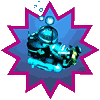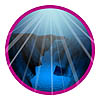Grade 6 - Exploring the Ocean
A 5-7 Week Science Unit for Middle School Level.
Essential Questions:
- How can technology help us explore the ocean?
- Why do we want to explore the ocean?
Enduring Understandings:
- The ocean is largely unexplored.
- Humans must use ingenious ways to study the ocean.
- Exploration leads to discovery.
- Science and technology can be used to detect and solve problems.
This unit is designed for 6th grade, but could be adapted for 5th-8th grades. Students learn about the exploration of deep sea canyons, seamounts, and the Bering Sea. They develop an understanding of how technology is used to explore the ocean by participating in a deep sea sampling simulation, creating a bathymetric map, and assuming the role of scientists using hydrophones to locate whales. They then explore their local waters using sampling techniques to discover the plants and animals. Finally, they explore a new ocean topic and present their knowledge to others.
Ocean Literacy Principles Addressed:
- The Earth has one big ocean with many features.
- The ocean makes Earth habitable.
- The ocean supports a great diversity of life and ecosystems.
- The ocean and humans are inextricably interconnected.
- The ocean is largely unexplored.
 |
Investigation 1: The Excitement of Exploration Why do people explore? |
 |
Investigation 2: Canyons in the Sea How do scientists explore the deep sea? |
 |
Investigation 3: Mountains in the Sea Why is it important to map the sea floor? |
 |
Investigation 4: Searching for Sounds in the Sea How does sound travel underwater? |
 |
Investigation 5: Field Trip - Exploring Our Local Waters How can we use scientific methods to explore our local water body or aquatic environment? |
 |
Investigation 6: Discovering Underwater Wonders of the World What can you discover about the underwater world? |
Authors:
Holly Debenham, Fairbanks North Star Borough School District
Rebecca Himschoot, Sitka School District
Joni Scharfenberg, Fairbanks
Stephanie Hoag, Curriculum Consultant, Juneau
Marilyn Sigman, Science Content Specialist
Marla Brownlee, Alaska Sea Grant




